Last Updated: 1 year ago
The different Siberian cat colors and patterns astonished cat lovers and animal enthusiasts worldwide.
These little kitties are present in almost every color and coat pattern imaginable.
If you want to know about the history of these amazing felines, all the color variations and patterns of a Siberian cat, and tips on their grooming and health, we’ve got you covered!
Just keep reading!
Siberian Cat History
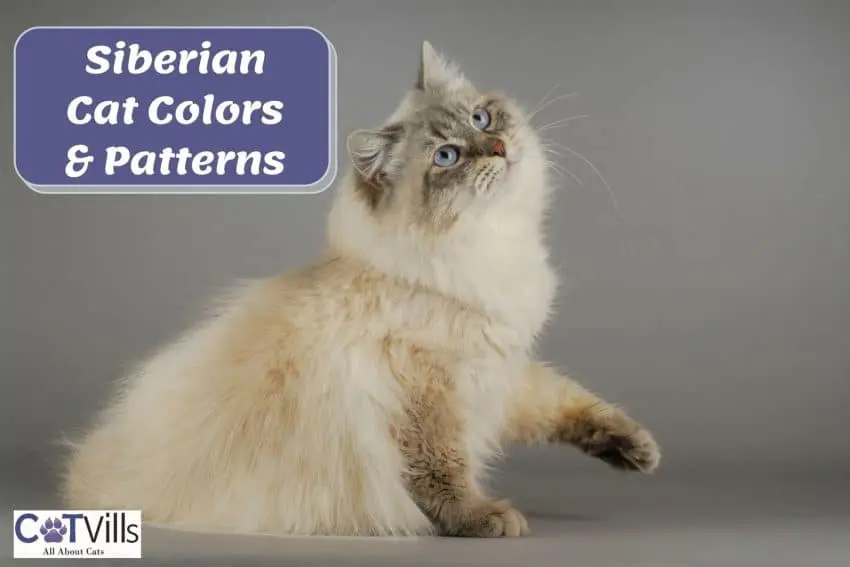
Siberian cats are one of the oldest domestic cat breeds known to humankind. Originally from the Siberian region of Russia, these furry little beasts have been reported to be friends with humans since 1000 AD.
Siberian cats are adapted to surviving in the unforgiving climatic conditions of the Siberian forests. Hence, these felines were earlier called “Siberian Forest Cats”.
Slowly but surely, as these cats warmed up to the Russian farmers, the two had an unwritten and unspoken truce.
In return for constant food and shelter, the Siberian cats would guard the granaries of the farmers. And this is how this species became the famous home cat breed in Russia.
In the early centuries, every Russian kid grew up with a Siberian kitty right beside him.
Shopkeepers loved to compete amongst themselves over who had the largest Siberian cat protecting their stores from bugs and rodents. In Russian families, even today, a Siberian cat is considered to be the most beloved pet.
However, even after centuries of domestication, large numbers of Siberian cats are still spotted roaming the Siberian Taiga (wild forest land).
Siberian Cat Colors and Patterns
Being one of the oldest cat breeds in existence, you can easily find a Siberian cat in any desired color.
Orange, grey, black, blue, and white are the most common colors of these felines. You can also find them with tabby markings and in a combination of two different shades.
Siberian cats can be divided into four major types of coloring.
1. Siberian Tabby Cats
Tabby cats are seen in almost all breeds of cats except a handful. With the famous M marking on the forehead and strips or spots covering the rest of the body, these cats are extremely attractive to look at.
However, there are three prominent colors of tabby cats in Siberian cats.
Silver Siberian Tabby Cat
These cats are brown or black with a white undercoat. Their fur is mostly white with tips slightly dark in color, which gives a silvery effect.
They have shiny fur with tabby markings all over their body, tail, and legs. Silver tabbies are not only present in brown and black colors but can be found in red silver, blue silver, and cream silver colors too.
Brown and Black Siberian Tabby Cats

Black and brown Siberian tabbies are the most natural-looking tabbies; they are also the most common Siberian cats.
These kitties are mostly in all shades of brown, right from light chocolate brown to dark brown or almost black. Their tabby markings are either black or darker shades of brown than the base coat.
Golden Siberian Tabby Cat
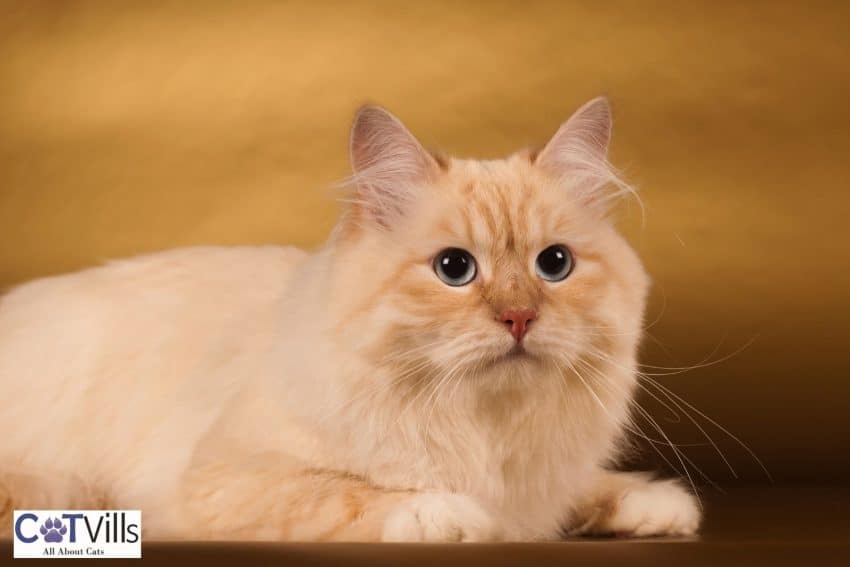
These seem to be the least common tabby Siberian cats. Their fur is dark golden, and they have darker tabby markings along with black or dark-brown paws.
These cats are often confused with brown tabby, as the coat coloring between both types is quite similar. Although, on closer look, a golden Siberian tabby cat can be easily differentiated.
However, these cats are rare as they cannot be as easily bred as the rest of the Siberian tabby cat population. The reason being that the genetic mutation behind this particular color is still not fully known.
2. Patterned Siberian cats
Neva Masquerade Siberian Cat
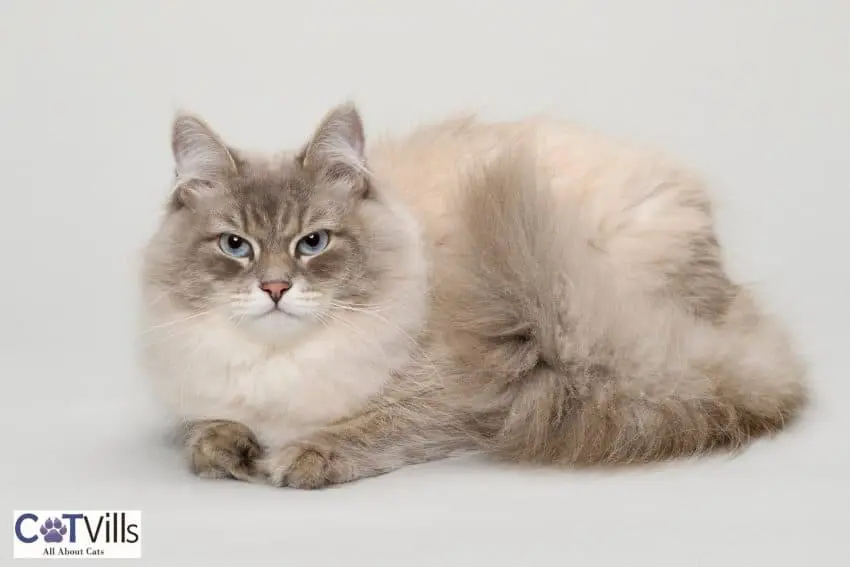
If your Siberian cat has color on its face, tail, and legs only, then it’s a Neva Masquerade Siberian Cat. These cats have plain bodies. Their eyes have a distinctive blue color.
Neva Masquerade The Siberian cat is also referred to as the point Siberian cat, as the darkest fur is present at the points of this cat.
Lynx Point Siberian cat
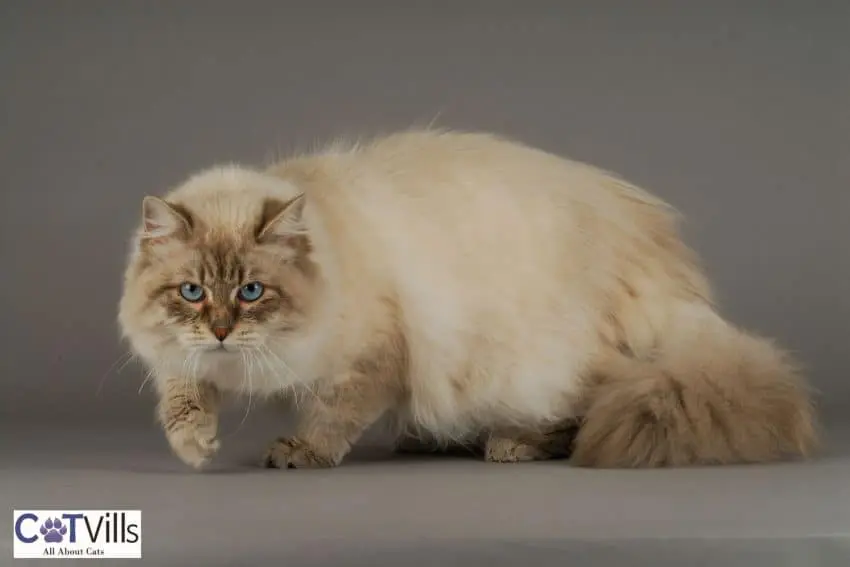
Similar to the Neva Masquerade Siberian Cat, a lynx point has darker fur in the form of stripes at the extremities of the cat.
Many a time, a very faint shadow of stripes is also seen on the body of the cat. However, it’s a rare phenomenon.
Smoke Siberian cat
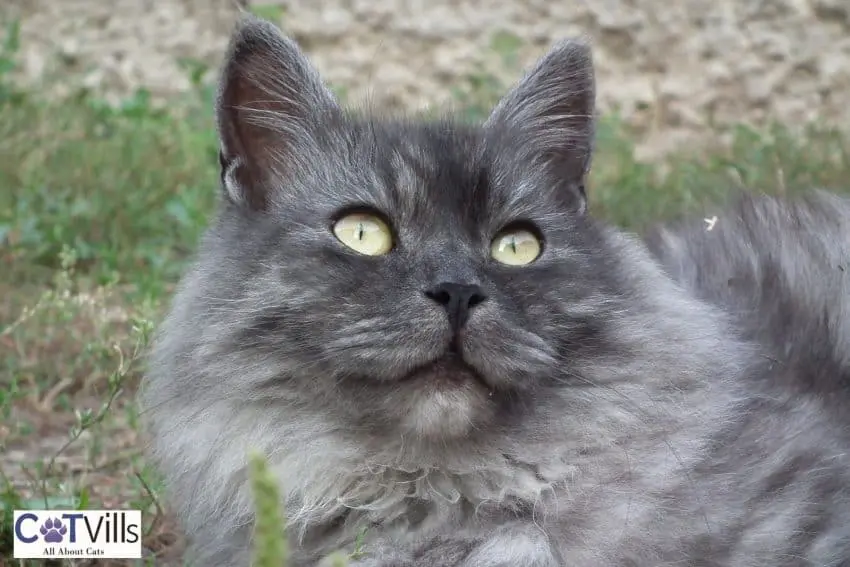
These cats seem to be solid-colored Siberian cats at first, but when they are exposed to light or when they move, you can easily see the color gradation in their fur.
Under the solid-colored, dense coat lies an undercoat of a different color. This coloration looks smoky, hence the name!
Bi-colored Siberian cat
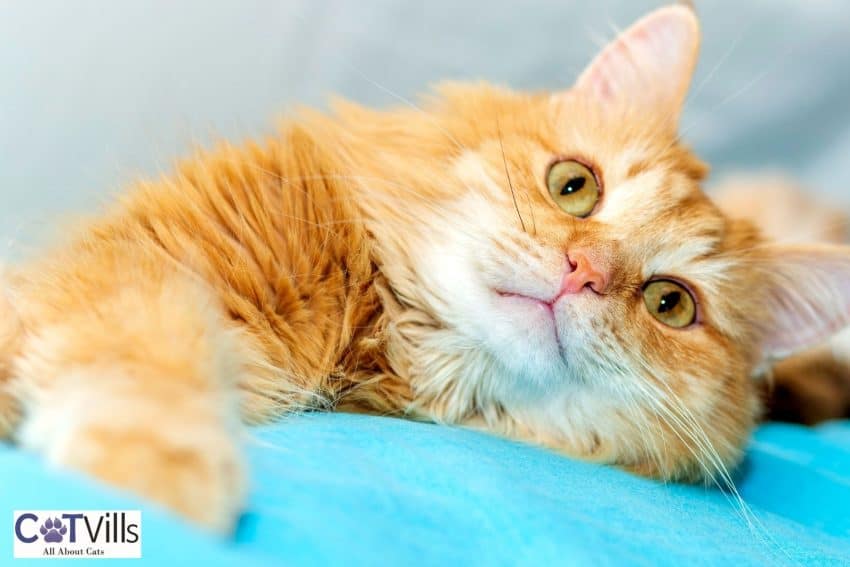
Bi-colored Siberian cats are a combination of two colors or patterns. It’s either a blend of two solid coat colors, like orange and white, or black and white.
Or a mix of one solid color and one pattern, like a tabby cat with white patches of fur on it, or smoke and white, etc.
Very often, a bi-colored Siberian cat has white as the common color.
3. Self-Siberian Cat or Full Colored Siberian Cats
A full-colored Siberian cat is called a self-Siberian cat. These kitties have a single solid color and are mostly seen in black, white, red, and blue colors.
However, experts claim that every Siberian cat has tabby markings, but sometimes these markings are overshadowed by a solid color.
Often, when a silverish-colored gene is prominent in a self-Siberian cat, it becomes a smoke-Siberian cat.
4. Orange Siberian Cat
I just love an orange Siberian cat. Their fluffy coats in ginger shades make them extra cute. The cause of this coat color is pheomelanin. This is a type of pigment that is inherited through genetics.
And it is because of genetics that most orange Siberian cats—in fact, any type of ginger cat—are male. Keeping things simple, a female cat has XX chromosomes, while males have XY.
The orange alle, or color, is carried on the X chromosome. Female cats can have black or orange alles, which means her female kittens need two X chromosomes with orange to be ginger.
On the other hand, males only need one orange X for a ginger coat. This is why the majority of orange cats are male.
Orange Siberian cats have the same classic personality as all the other colors found in the breed.
The color orange has a medium population. That is, they aren’t the rarest or the most common.
Siberian Cat-Eye Colors
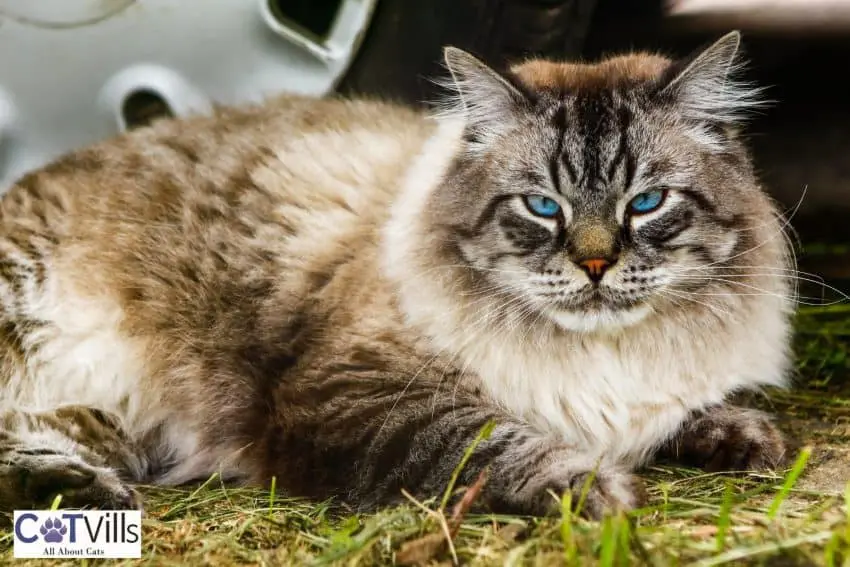
One of the most beautiful features of a Siberian cat is its eyes. Their slightly oval and highly expressive eyes have varying colors, right from grey to green and copper.
These kitties rarely have blue eyes, except for the Neva Masquerade Siberian Cat.
Their eyes are placed a little farther from one another, which adds to the cuteness of the cat. Some of the Siberian cat names are as unique as their eyes!
The personality of a Siberian Cat
This breed of cat is expressive, passionate, and loyal. If you wish to have someone greet you every time you return home, this cat can fulfill your expectations.
They will follow you around the house while softly meowing all the way. They are extremely friendly with kids and adults alike.
They love to spend time with their humans and often engage in playtime with other pets as well.
All over, a Siberian cat is an extremely loyal and safe pet to have. They are extremely domesticated and can be trained a bit too.
Siberian Cat Health
Siberian cats originate from a very harsh climatic region in the world. Years of living in the trans-Siberian regions have made these kitties pretty strong and immune to viral infections, which means fewer health issues.
However, being a cat means having some hereditary diseases. This includes hypertrophic cardiomyopathy for Siberian cats.
This condition is commonly diagnosed in this breed. It’s when the heart muscle thickens, which results in the heart’s malfunctioning.
If left untreated for a long time, this disease can be fatal and result in the sudden death of your beloved Siberian kitty.
To prevent serious health damage, it’s better to take precautions beforehand. The symptoms of hypertrophic cardiomyopathy are dizziness, fatigue, and shortness of breath.
If you observe any of these symptoms in your cat, visit a vet immediately. A healthy Siberian cat lives up to 20 years, but the average lifespan of a Siberian cat ranges from 10 to 18 years.
The males of this breed are slightly bulkier than the females; on average, a fully grown Siberian kitty weighs up to 3.5 to 8 kg.
Siberian cats are considered to be on the larger spectrum of cats when it comes to size. However, they are still small compared to the Maine Coons.
Siberian kittens are small until the age of 5 and mature slowly compared to other cat breeds.
Siberian Cat Grooming

Siberian cats have a naturally long, fluffy, but oily coat. This Siberian coat is quite water-resistant and keeps the cats warm in the tundra region.
In other words, as a cat parent, it’s tough to bathe these kitties. Although their love for water makes it a bit easy to get them into a bath, it almost takes 5–10 minutes to get their cat completely wet.
It’s best to use a cat-friendly shampoo to bathe a Siberian cat, as their coat is difficult to wash with a regular shampoo.
Gently scrub the shampoo all over your pet and thoroughly wash it till all the shampoo is rinsed off. This process might take some time as well.
Siberian cats shed only twice a year, which makes this cat a good pet for allergic people. Moreover, this cat needs the least amount of maintenance, as it is capable of grooming itself well.
Bathe them once a week and lightly brush their fur to avoid tangles and matting. Also, clip their nails regularly to avoid injuries in case you have kids around.
Conclusion
Siberian cats come in a wide variety of colors, so you should feel free to take a pick. Also, if you fall in love with a white Siberian kitty, click here to check out the names of white cats.
Honestly, no matter the color or the pattern, this little kitty is likely to shower you with an equal amount of love and affection!
What are your favorite Siberian cat colors? Let us know in the comments below!
Resources:

